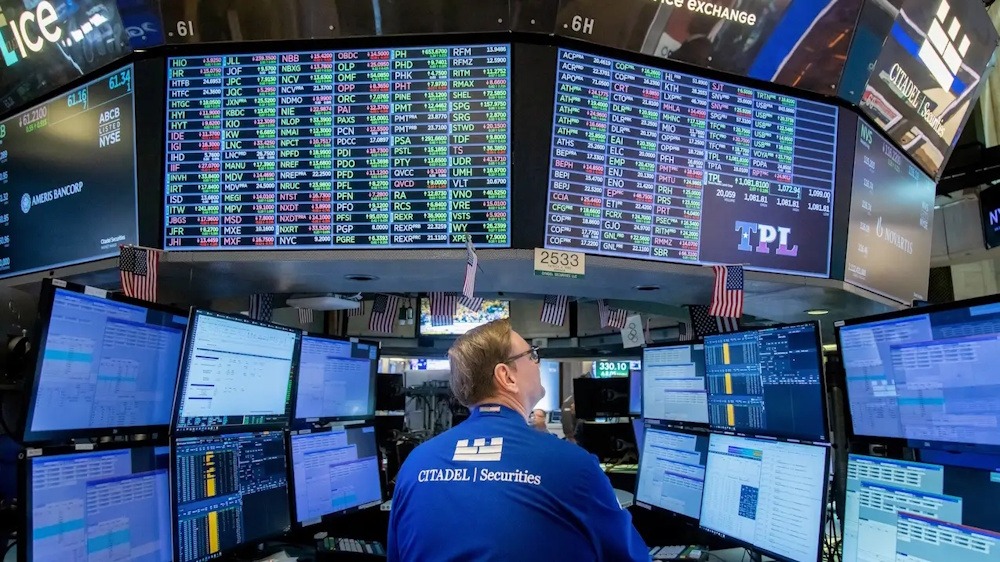
A disruption on the platform of exchange operator has impeded trading in futures across various assets, resulting in traders operating without critical information prior to a truncated U.S. trading session. The U.S. dollar is poised for its most significant weekly decline in four months, driven by increasing bets on a potential interest rate cut by the Federal Reserve next month. In November, core consumer inflation in Tokyo remains elevated above the Bank of Japan’s target, reinforcing the argument for a potential increase in borrowing costs in the near future.
Trading in commodities futures and options widely used platform was suspended on Friday as a result of a technical problem at data centers, according to a statement from the world’s largest exchange operator shared on social media. It is stated, “Due to a cooling issue at CyrusOne data centers, our markets are currently halted,” in a statement posted on X. The company indicated that it is addressing the issue in the short term. CyrusOne manages over 55 data centers across the United States, Europe, and Japan. The outage seemed to have caused significant disruptions across a range of commodities and agricultural goods contracts. Futures prices for equity indices, such as the S&P 500 and Nasdaq 100, seemed to be affected as well. The outage exacerbated the already sluggish trading volumes worldwide, a trend observed following the U.S. Thanksgiving holiday on Thursday. Futures represent a crucial element of financial markets, utilized by a diverse array of participants—from trading desks to individual speculators—to hedge or establish positions across various financial assets.
Asian stocks concluded a challenging November on a relatively stable note, even as Chinese markets faced renewed pressures stemming from concerns regarding a potential collapse in the property sector. Japanese shares exhibited a flat-to-low range as a series of data revealed unexpected resilience in the economy, thereby elevating expectations for an interest rate hike by the Bank of Japan. Regional markets experienced a lack of trading cues due to the U.S. Thanksgiving holiday. Overall losses in Asian stocks remained constrained by optimism regarding a potential U.S. interest rate cut in December. However, the majority of exchanges in the region were experiencing declines for November, following a drop in technology valuations throughout much of the month, driven in part by concerns regarding the viability of extensive investments in artificial intelligence. In other markets, European stocks fluctuated near the neutral point on Friday, as the prospect of a fifth consecutive month of gains in regional shares remained uncertain.
The U.S. dollar exhibited a modest strengthening; however, it continues to confront its most significant weekly decline since July, as market participants evaluate the likelihood of a rate cut by the U.S. Federal Reserve in the upcoming month. By 03:28, the U.S. dollar index, which monitors the currency relative to a selection of its international counterparts, had increased by 0.1% to 99.70. The likelihood of a 25-basis-point reduction by the Federal Reserve during the December 9-10 meeting has surged to approximately 85%, up from about 40% earlier this month. This shift has contributed to a depreciation of the dollar and a decrease in bond yields. The shift was influenced by favorable U.S. data and dovish remarks from Federal Reserve policymakers, although some officials have advocated for a more prudent stance on rate adjustments in light of the absence of new economic data. Speculation regarding the potential appointment of White House economic adviser Kevin Hassett to the role of Fed Chair has introduced an additional dimension to the ongoing debate. A policy stance led by Hassett may lean towards a more rapid and assertive easing approach, a development that would generally exert additional pressure on the dollar.
In November, Tokyo’s headline consumer price index held steady at 2.7%, defying expectations amidst elevated food prices. Concurrently, underlying inflation continues to surpass the Bank of Japan’s annual target significantly. In November, the “core” CPI, which omits the fluctuating prices of fresh food, increased by 2.8% compared to the previous year, according to government data released on Friday. The print exceeded expectations of 2.7% and aligned with the pace observed in the previous month. The core CPI reading, a key indicator of underlying inflation monitored by the Bank of Japan, exceeded the central bank’s 2% annual target. Persistent inflation may provide the Bank of Japan with additional motivation to raise interest rates. Policymakers have recently indicated that they will contemplate an increase in rates at the BOJ’s December meeting. However, such increases may place the central bank in conflict with Prime Minister Sanae Takaichi’s administration, which has generally advocated for more accommodative monetary policies and increased fiscal expenditure to bolster economic growth.
Bitcoin experienced a slight decline, yet remained above the $91,000 threshold, as market participants increasingly speculated on a potential interest-rate reduction by the Fed in December and considered the ramifications of a possible leadership transition at the central bank. The world’s largest cryptocurrency experienced a decline of 0.4%, trading at $91,129.7 as of 03:44. Last Friday, the digital asset experienced a temporary decline, reaching approximately $80,000, marking its lowest point since April. For the week, Bitcoin was poised for an increase of nearly 8%, marking a potential end to four consecutive weeks of declines.
